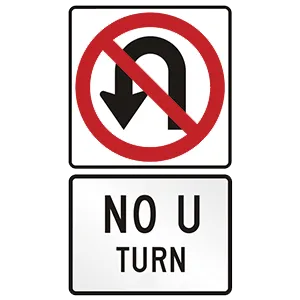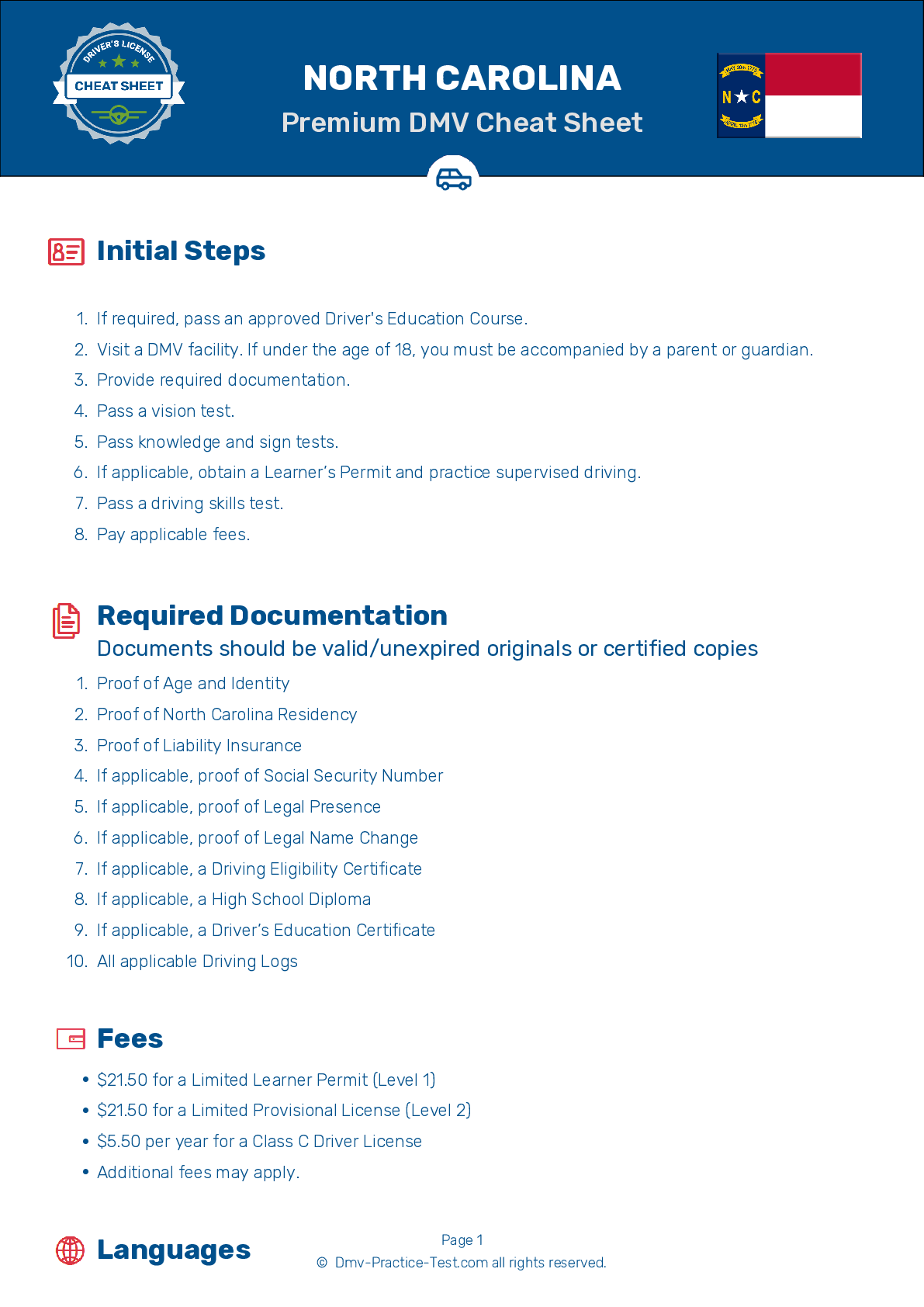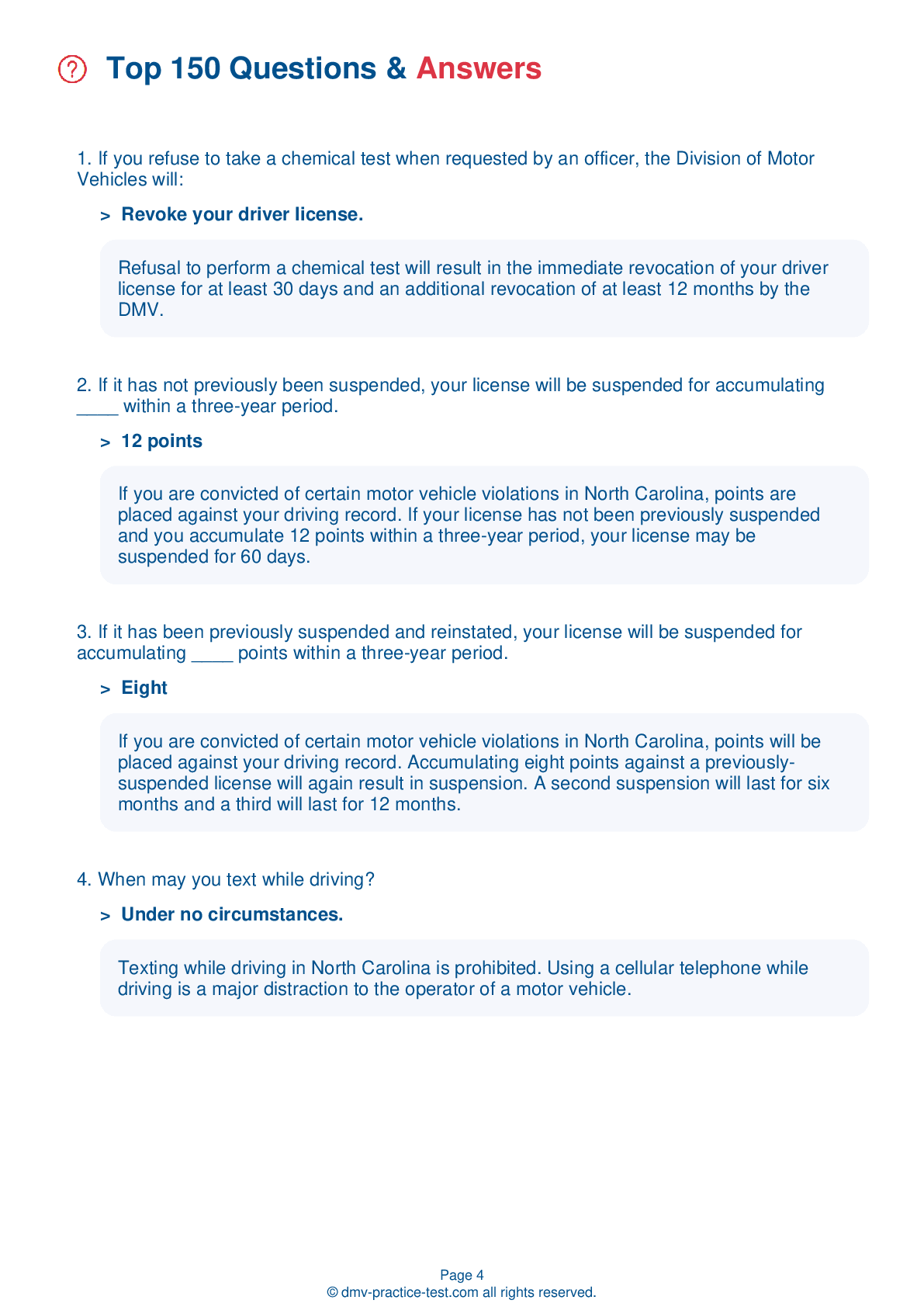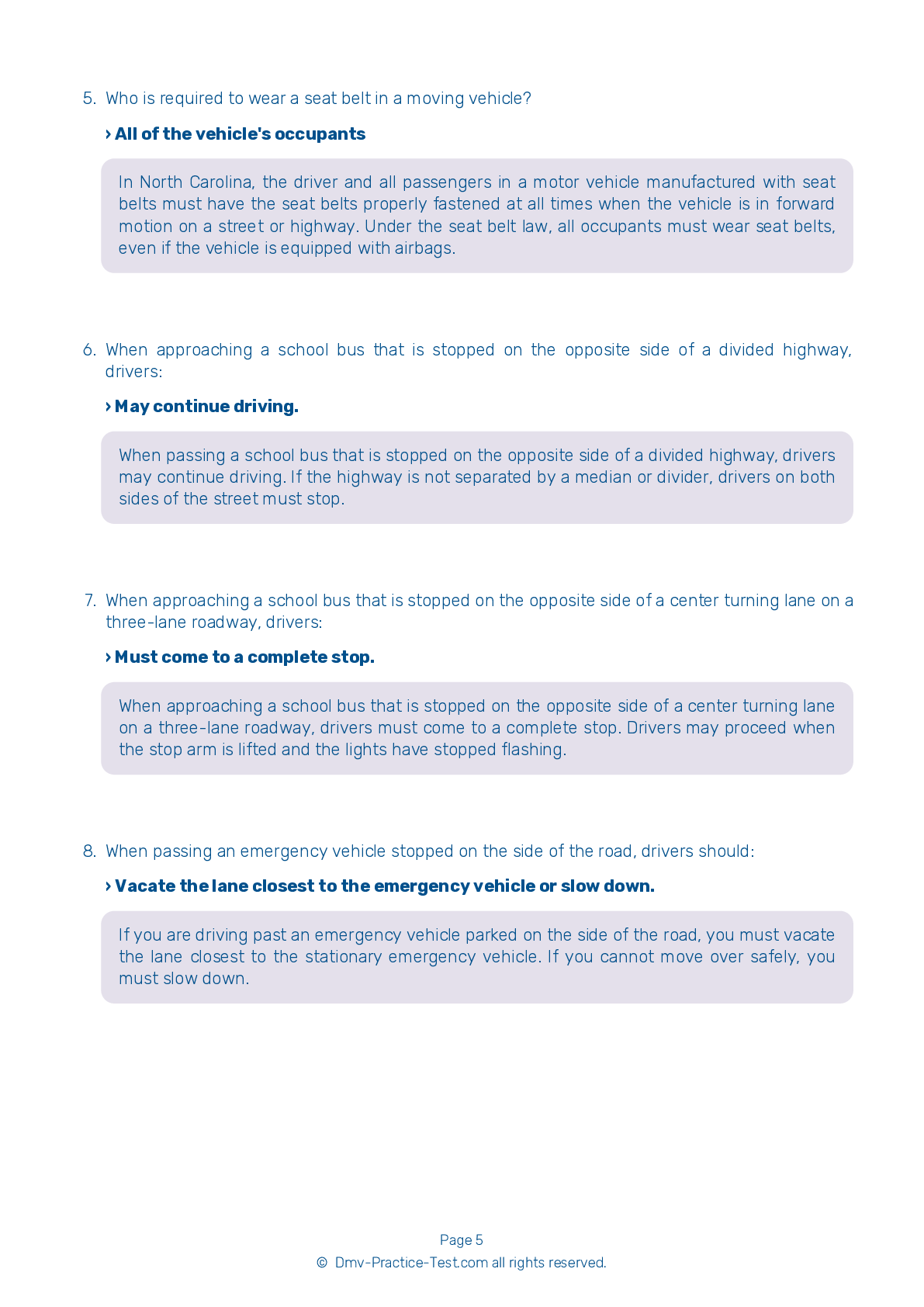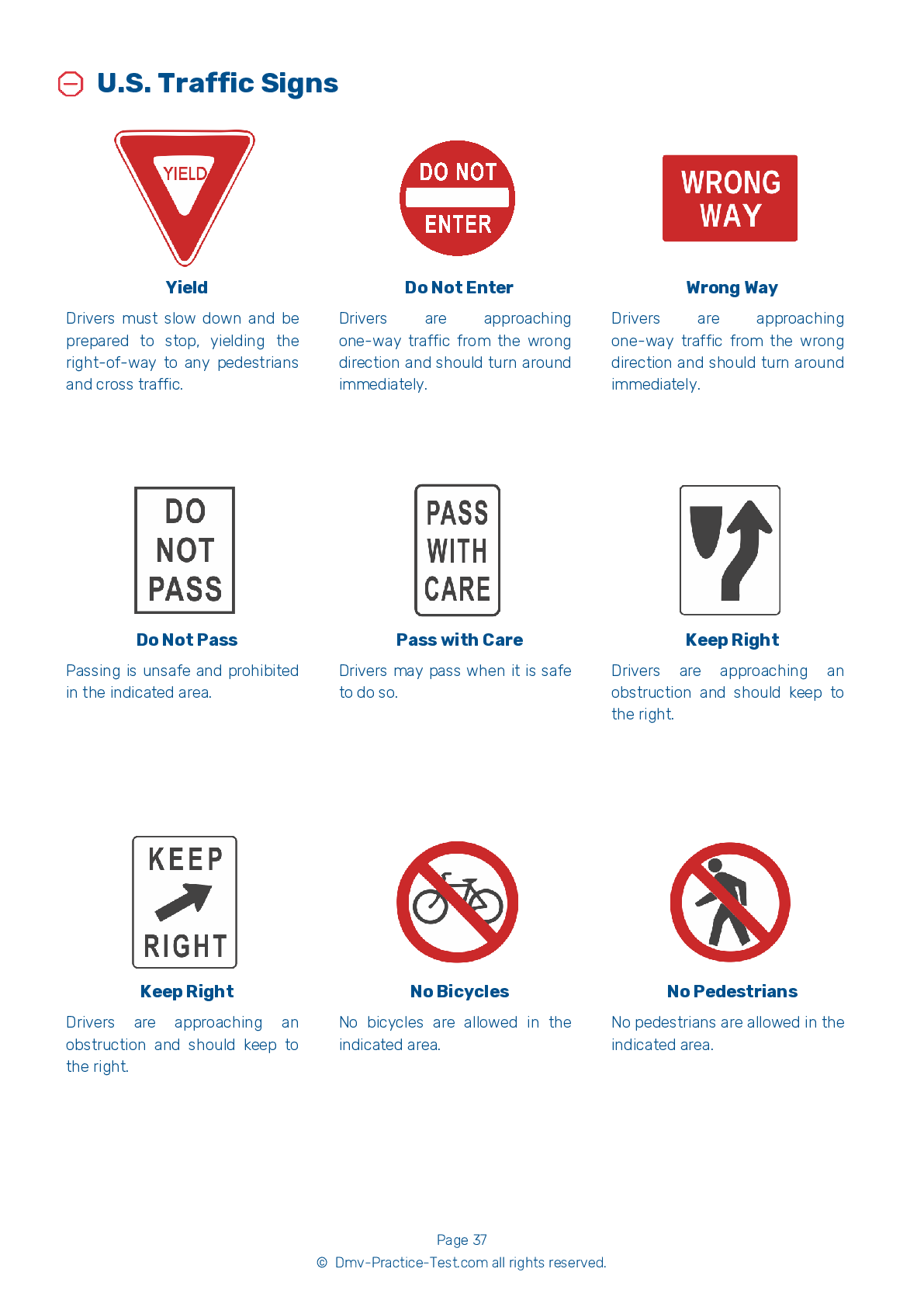FREE North Carolina DMV Practice Test #17 Page 2 of 5
The DMV practise exams in North Carolina have been updated for January 2025. It includes questions based on the most important traffic signals and legislation in the North Carolina Driver Handbook for 2025. To study for the DMV driving permit test and driver's licence exam, use actual questions that are very similar (often identical!) to the DMV driving permit test and driver's licence exam.
Each question on the practise exam has a tip and explanation to help you recall the ideas. Questions about traffic rules, traffic signs, and driving statutes, as well as knowledge from the Driver Handbook, will be included in the written portion of the official North Carolina DMV test.
You must properly answer 32 of the 37 questions to receive a passing mark. To help you prepare for your instruction permit or driver's licence, take this practise test from the North Carolina Department of Motor Vehicles.
The DMV exam is offered in a variety of languages.
Using any form of testing help will result in an automatic fail, and the DMV may take further action against your driver's licence, so avoid it.
10 . To reduce the effects of headlight glare at night, you should look:
If oncoming drivers do not dim their headlights for you, keep your eyes on the right side of the road ahead. Do not look directly at the oncoming headlights because the glare may blind you for several seconds.
11 . This road sign means:
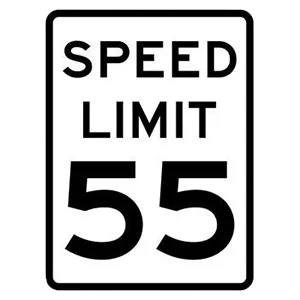
This is a speed limit sign. It indicates the maximum legal speed that you may drive on the road where it is posted. At times of rain, snow, ice, or other less-than-ideal conditions, you may have to drive more slowly than the posted limit.
12 . When traveling on a multilane roadway with traffic moving in opposite directions, how should drivers use the shared center lane?
The only time a vehicle should enter the center lane is at a point where the vehicle will have time to slow down or stop in order to make a safe left turn maneuver. The center lane should never be used as a passing lane or as a through-traffic lane.
13 . When you need to change lanes, it is important to:
Always signal for an appropriate amount of time before making a lane change or exiting a freeway. Before you make any move to the right or left, quickly turn your head and look over your shoulder to see if your blind spot is clear.
14 . This sign means:
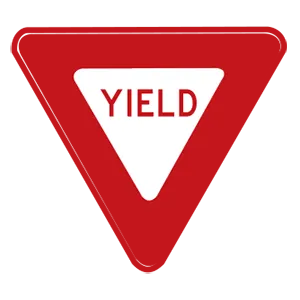
Traffic signs with three sides of equal length warn drivers to slow down when approaching an intersection and to be prepared to come to a complete stop to yield to other drivers or pedestrians. Drivers may proceed when it is safe to do so.
15 . When you are in a line of traffic that is crossing a railroad track that has no signals or gates:
If you are following another vehicle at a railroad crossing, check to make sure you have enough room to get all the way across before you drive onto the tracks. You should never try to pass another vehicle as you approach or cross a railroad crossing. Always check for trains before crossing any railroad tracks.
16 . You are turning onto a two-lane road divided by a broken yellow line. You know immediately that:
Yellow centerlines are used to separate traffic moving in opposite directions. Broken lines may be crossed to pass slower-moving traffic when it is safe to do so.
17 . This sign means:
